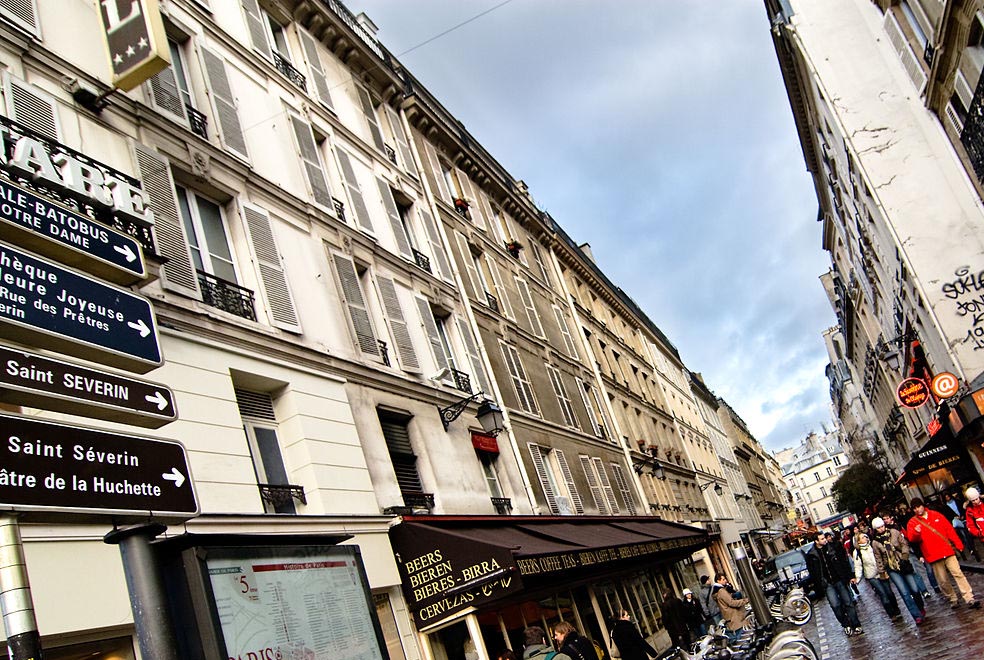In The Death and Life of Great American Cities, Jane Jacobs said that “Cities need old buildings so badly it is probably impossible for vigorous streets and districts to grow without them.” But in an age of burgeoning urban populations and a pressing need to accommodate a more and more people into cities, does this still hold true? Shouldn’t we be replacing older smaller buildings with LEED Platinum high-rises? “Where do older, smaller buildings fit within cities that are seeking to maximize transit investments, increase density, and compete in the global economy” ask some urbanists.
A new report by the National Trust for Historic Preservation confirms that older, smaller buildings are extremely important to the vitality and liveliness of a city, and even for its economy. The researchers focused on three cities with strong real estate markets and extensive older fabric: San Francisco, Seattle, and Washington, D.C. Looking not just at historically designated or older buildings, but all existing structures across these three urbanlandscapes, the research team empirically documented the age, diversity of age, and size of buildings and statistically assessed the relationships between these characteristics and 40 economic, social, cultural, and environmental performance metrics.
Here is what they found:
1. Older, mixed-use neighborhoods are more walkable.
In Seattle and San Francisco, older neighborhoods with a mixture of small, mixed-age buildings have significantly high Walk Score rankings and Transit Score ratings that neighborhoods with large, new buildings.
2. Young people love old buildings.
In Seattle, San Franciso and Washington D.C., the median age of residents in areas with a mix of small, old and new buildings is lower than in areas with larger, predominantly new buildings. These areas are also home to a significantly more diverse mix of residents from different age groups.
3. Nightlife is most alive on streets with a diverse range of building ages.
San Francisco and Washington, D.C., city blocks composed of mixed-vintage buildings host greater cellphone activity on Friday nights. in Seattle, areas with older, smaller buildings see greater cellphone use and have more businesses open at 10:00 p.m. on Friday.
4. Older business districts provide affordable, flexible space for entrepreneurs from all backgrounds.
In Seattle and Washington, D.C., neighborhoods with a smaller-scaled mix of old and new buildings host a significantly higher proportion of new businesses, as well as more women and minority-owned businesses than areas with predominantly larger, newer buildings.
5. The creative economy thrives in older, mixed-use neighborhoods.
In Seattle and Washington, D.C., older, smaller buildings house significantly greater concentrations of creative jobs per square foot of commercial space. Media production businesses, software publishers, and performing arts companies can be found in areas that have smaller-scaled historic fabric.
6. Older, smaller buildings provide space for a strong local economy.
In Seattle and Washington, D.C., streets with a combination of small, old and new buildings have a significantly higher proportion of non-chain restaurants and retailers, and in Seattle, San Francisco, and Washington, D.C., areas of the city with older, smaller buildings host a significantly higher proportion of jobs in small businesses.
7. Older commercial and mixed-use districts contain hidden density.
In Seattle, San Francisco, and Washington, D.C., streets with a mix of old and new buildings have greater population density and more businesses per commercial square foot than streets with large, new buildings. in Seattle and Washington, D.C., these areas also have significantly more jobs per commercial square foot.
One finding of this research is that racial and ethnic diversity is significantly less in older, smaller neighborhoods. This is a very problematic finding and may be attributed to gentrification. As older, smaller neighborhoods go up in price, immigrants and minorities are pushed out into the suburbs that are comprised of bigger, newer building fabric which isn’t as conducive to community-building, a strong local economy and urban vitality.
After looking at a variety of big data, this report concludes that the character and scale of buildings matter. And that moving forward, it’s vital that cities consider the role of older, smaller buildings and neighborhoods into their growth plans and look for way to integrate new development into a healthy existing urban fabric instead of destroying the existing fabric to accommodate new development.
Source: Older, Smaller, Better Measuring how the character of buildings and blocks influences urban vitality report by the National Trust for Historic Preservation and Preservation Green Lab.
Photo credit: Photo by Angelo DeSantis from Berkeley, US (wet Paris streetsUploaded by AVIA BavARia) [CC-BY-2.0], via Wikimedia Commons
*Come to the Blooming Rock Book Club meeting this Tuesday October 14, 2014 at 6:30pm at The Roman Candle Baking Co. on SE 34th Street and Division in Portland, OR! We will be discussing Jan Gehl’s latest book: Cities for People.

















